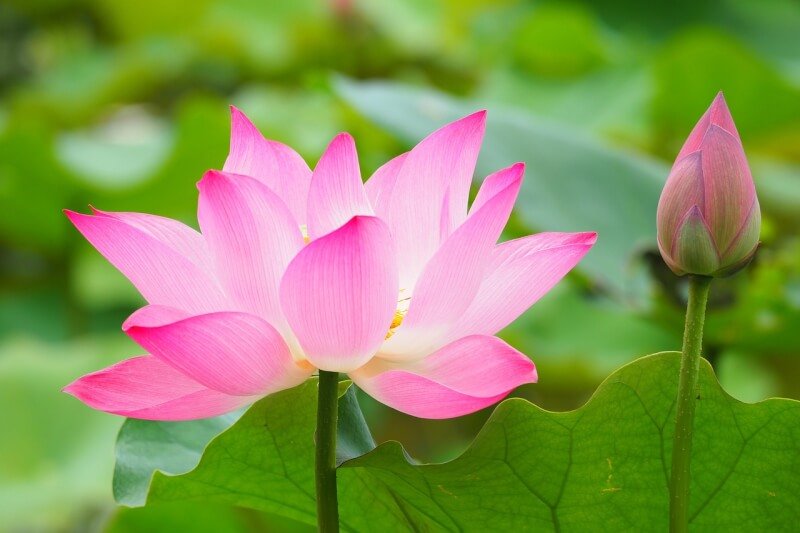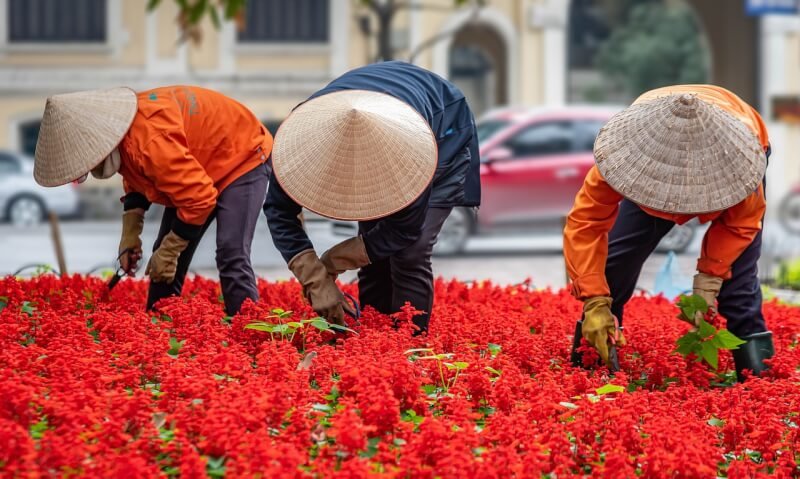If you’ve ever dreamt of having a fresh supply of herbs at your fingertips, even in the heart of the city, then get ready to turn that dream into a reality. In “The Ultimate Guide to Indoor Herb Gardening in Urban Spaces,” we’ll uncover the secrets to cultivating a thriving herb garden right in the comfort of your own home. From choosing the perfect herbs for small spaces to providing essential care and maintenance tips, this comprehensive guide will equip you with all the knowledge you need to bring the aromatic flavors of nature into your urban abode. Say goodbye to wilted store-bought herbs, and say hello to a vibrant and bountiful indoor garden that will impress both your taste buds and your guests. It’s time to transform your urban space into a green oasis and take your culinary creations to a whole new level.

Choosing the Right Herbs
When it comes to indoor herb gardening in urban spaces, one of the first things you need to consider is the available space. Take a look at your home or apartment and assess how much room you have to dedicate to your herb garden. If you have limited space, you may want to prioritize herbs that don’t spread out too much or consider vertical gardening options.
It’s also important to select herbs based on your preferences. Think about the dishes you enjoy cooking and the flavors you love. Are you a fan of Italian cuisine? Then basil, oregano, and thyme might be great options for you. Do you like Asian dishes? Consider growing Thai basil, lemongrass, or mint. Choosing herbs that align with your culinary preferences will ensure that you’ll get the most use out of your indoor garden.
While choosing herbs based on your preferences is important, it’s also crucial to select herbs that are suited for indoor conditions. Some herbs, like rosemary and lavender, prefer drier and sunnier environments, while others, like parsley and cilantro, thrive in more humid conditions. Considering the specific needs of each herb will help you create the ideal indoor environment for them to grow and flourish.
Opting for versatile herbs is another great strategy for indoor herb gardening in urban spaces. By choosing herbs that can be used in various dishes, you’ll be able to maximize the utility of your garden. Herbs like basil, thyme, and parsley are incredibly versatile and can be used in a wide range of cuisines, making them fantastic choices for urban indoor gardens.
Providing Adequate Light
Ensuring that your indoor herbs receive adequate light is crucial for their growth and overall health. Start by assessing the natural lighting in your space. Look for areas with the most sunlight exposure, such as windowsills or balconies. If your space lacks natural light, don’t worry! You can supplement with artificial lighting.
Investing in proper LED grow lights is a great option for indoor herb gardening. These lights provide the necessary spectrum of light for photosynthesis and can be adjusted to meet the specific needs of your herbs. Place the lights above your herb garden, adjusting the height as the plants grow taller.
When it comes to light duration, it’s essential to determine the ideal amount of light your herbs need. Most herbs require around 12-16 hours of light daily. However, this can vary depending on the specific herb and its stage of growth. Consider using timers to ensure consistent and uninterrupted light exposure.
Positioning your herbs for optimum light exposure is another critical factor. Rotate the pots regularly to ensure uniform light distribution and prevent the plants from leaning or growing towards one side. If possible, try to position your herbs near windows or where they can receive direct sunlight for a few hours a day.

Selecting Suitable Containers
Choosing the right containers for your indoor herb garden is essential for the well-being of the plants. Consider the herb’s root system when selecting containers. Herbs with deep roots, such as rosemary, may require deeper containers to accommodate their growth. On the other hand, herbs with shallower root systems, like basil, can thrive in smaller pots.
Proper drainage is crucial for preventing root rot and overwatering. Ensure that the containers you choose have drainage holes at the bottom. This will allow excess water to escape and prevent waterlogged soil, which can be detrimental to herb growth.
When it comes to container materials, there are various options to choose from. Clay pots are a popular choice as they are porous, allowing for better airflow and drainage. Plastic pots, on the other hand, are lightweight and retain moisture better. Select the material that best suits your needs and the specific requirements of your herbs.
Account for the herb’s growth potential when choosing containers. Some herbs, like mint, have a tendency to spread rapidly and can quickly outgrow smaller pots. Opt for larger containers or consider planting them separately to prevent overcrowding. Additionally, evaluate the available space you have for your herb garden and choose containers that fit well in your designated area.
Choosing the Right Soil
Using the right soil mix is essential for the health and growth of your indoor herbs. Select a well-draining soil mix to prevent waterlogging and ensure proper airflow around the roots. Look for soil mixes labeled specifically for herbs or container gardening, as they are formulated to meet the unique needs of potted plants.
Incorporating organic matter into your soil mix can greatly improve its fertility. Adding compost or well-rotted manure will provide essential nutrients to your herbs and contribute to healthy growth. This organic matter also helps retain moisture while still allowing excess water to drain, striking a balance that is beneficial for your herbs.
Avoid using heavy garden soil for your indoor herb garden, as it tends to retain too much water and can suffocate the roots. Instead, opt for lighter soil mixes that are specifically formulated for potted plants. These blends typically contain a mixture of peat moss, perlite, and vermiculite, ensuring optimal drainage and aeration.
Considering the use of soilless potting mixes is another option to explore. These mixes are made up of materials like coconut coir, vermiculite, and perlite, providing excellent drainage and moisture retention. Soilless mixes are also lightweight and sterilized, reducing the risk of pests or diseases in your indoor herb garden.

Watering and Humidity Considerations
Understanding the water requirements of your herbs is crucial for maintaining their health. Each herb has specific needs when it comes to watering, and over or underwatering can lead to various problems. Research the water requirements of each herb in your garden and create a watering schedule tailored to their needs.
Avoid overwatering your herbs, as this can lead to root rot and other fungal diseases. Before watering, check the moisture level of the soil by inserting your finger about an inch deep. If it feels dry, it’s time to water. If it still feels damp, hold off on watering for a few more days.
Monitoring humidity levels in your space is also important for indoor herb gardening. Dry indoor environments can affect the growth and health of your herbs, especially those that prefer higher humidity levels. Consider using a hygrometer to measure humidity and place a tray of water or a humidifier near your plants to increase moisture levels.
Using water of appropriate quality is another consideration for indoor herb gardening. Tap water can contain chemicals like chlorine or excessive mineral content, which can be harmful to your herbs. If your tap water has high mineral content, consider using filtered or distilled water instead. Additionally, allowing tap water to sit for 24 hours before using it can help dissipate chlorine.
Temperature and Air Circulation
Maintaining the right temperature range is crucial for the success of your indoor herb garden. Most herbs prefer temperatures between 60-75°F (15-24°C). Avoid exposing your herbs to extreme temperatures, such as near drafty windows or heat sources like radiators. Sudden temperature fluctuations can cause stress or even damage the plants.
Proper air circulation is also important for preventing the growth of mold, fungal diseases, and pests. Ensure that there is adequate airflow around your herbs by placing them in an area with good ventilation. Avoid overcrowding the plants, as this can impede air circulation and create favorable conditions for disease development.
If your indoor space lacks natural airflow, consider using fans or opening windows periodically to refresh the air. This will help maintain a healthy environment for your herbs and promote their overall well-being.
Fertilizing Indoor Herbs
Fertilizing your indoor herbs is essential for providing them with the necessary nutrients to thrive. When it comes to choosing fertilizers, opt for organic or slow-release options. These types of fertilizers release nutrients gradually, providing a consistent and balanced source of nourishment for your herbs.
Be mindful of each herb’s specific nutrient requirements when fertilizing. Some herbs, like basil, require higher nitrogen levels for leafy growth, while others, like lavender, prefer lower nitrogen levels and more phosphorus for flowering. Research the specific nutrient needs of each herb in your garden and select a fertilizer that matches those requirements.
Follow the recommended fertilizing schedule for your herbs. Most indoor herbs benefit from being fertilized every 4-6 weeks during the growing season, spring to fall. However, this can vary depending on the herb and its growth rate. Overfertilizing can lead to nutrient imbalances or burns, so it’s crucial to follow the recommended dosage.
When applying fertilizers, it’s best to dilute them to avoid damaging the delicate roots of your herbs. Mix the fertilizer according to the package instructions and apply it to the soil around the herbs. Avoid getting the fertilizer on the leaves as it can cause leaf burn. Remember to water the herbs after fertilizing to prevent any potential buildup of salts in the soil.
Pruning and Harvesting Herbs
Understanding the growth habits of your herbs is important for proper pruning and harvesting. Regularly pruning your herbs helps promote bushier growth and prevents them from becoming leggy or spindly. Trim the tips of the stems to encourage branching, and remove any dead or yellowing leaves to maintain the overall health of the plants.
When it comes to harvesting herbs, timing is key. Harvesting too early or too late can affect the flavor and quality of your herbs. Most herbs are at their peak flavor and aroma just before they flower. Harvest them in the morning when the essential oils are at their highest concentration for the best flavor.
Ensure proper harvesting techniques to avoid damaging the plants. Use sharp, clean scissors or pruning shears to make clean cuts, avoiding tearing or bruising the stems. Only harvest up to one-third of the herb’s foliage at a time to allow the plant to replenish and continue growing.
Preventing Pests and Diseases
Regularly inspecting your herbs for pests is important to catch infestations early and prevent damage. Look for signs of pests such as aphids, spider mites, or whiteflies on the leaves or stems. If you notice any pests, act immediately to prevent them from spreading and causing further harm.
Implementing preventive measures is crucial for maintaining a healthy indoor herb garden. Regularly removing dead leaves or fallen debris from the pots can help prevent the buildup of pests or fungal diseases. Keep your indoor space clean and free of clutter to discourage pests from taking up residence in your herbs.
Using organic pest control methods is recommended to avoid introducing harmful chemicals into your indoor environment. Options like neem oil, insecticidal soaps, or vinegar solutions can effectively control pests without posing risks to your herbs or your own health. Research the appropriate treatment method for the specific pest you’re dealing with and follow the instructions carefully.
Identifying and treating common herb diseases is essential for maintaining the overall health of your indoor herb garden. Some common herb diseases include powdery mildew, root rot, and fungal infections. Research the symptoms and appropriate treatment methods for these diseases, and act promptly if you notice any signs of infection.
Creative Uses for Indoor Herbs
Indoor herb gardening in urban spaces not only provides you with fresh herbs for cooking but also opens up a world of creative possibilities. Here are some ideas for making the most of your indoor herbs:
Culinary applications: Use your fresh herbs to enhance the flavor of your favorite dishes. Toss freshly chopped herbs on salads, add them to soups or stews, or infuse their flavors into oils, vinegars, or butters. The possibilities are endless when it comes to culinary creativity with herbs.
Herbal teas and infusions: Many herbs, like mint, chamomile, and lemon balm, make delicious and soothing herbal teas. Harvest a few sprigs, steep them in hot water, and enjoy a comforting cup of homemade tea. You can also experiment with herbal infusions by adding herbs to water or other liquids for a refreshing twist.
Aromatherapy and homemade beauty products: Harness the natural scents and therapeutic properties of your herbs by creating your own aromatherapy blends or homemade beauty products. Make your own herbal sachets, bath salts, or facial steams using dried herbs to indulge in their soothing and rejuvenating benefits.
Decorative and aesthetic uses: Indoor herbs can also be aesthetically pleasing and act as natural decor elements in your urban space. Arrange potted herbs on windowsills or shelves to add a touch of greenery to your home. Get creative with different containers and arrangements to create a visually appealing indoor herb garden.
By considering these tips and implementing the best practices for indoor herb gardening in urban spaces, you’ll be well on your way to enjoying a thriving herb garden right in the comfort of your own home. So roll up your sleeves, choose your favorite herbs, and start creating your own green oasis today!


